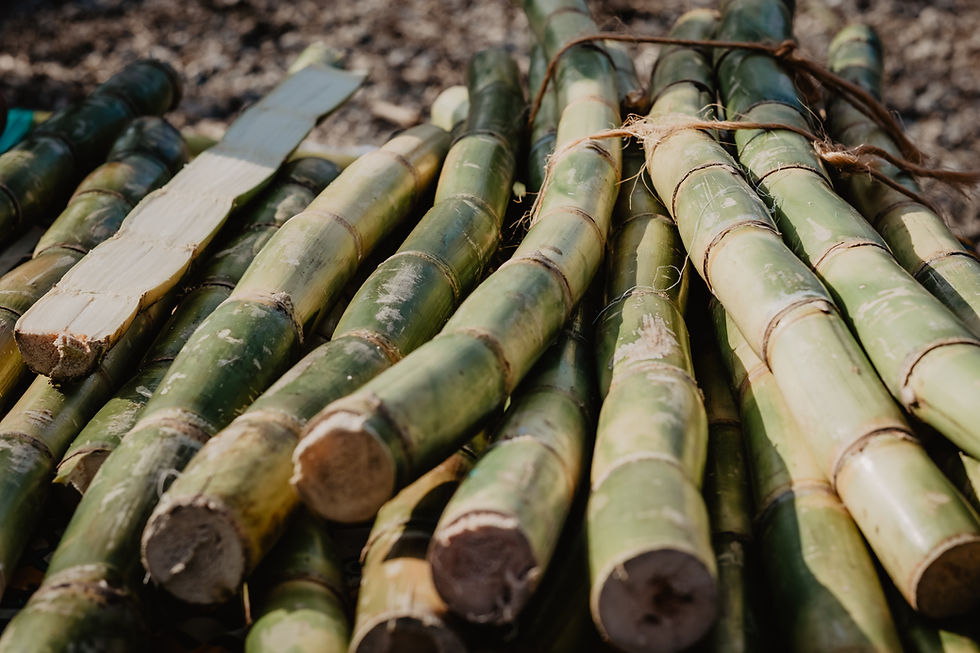Season 5.1: Trees
- SOURCED
- Apr 5, 2024
- 3 min read

There are many ways that we come to a season - it's an ingredient with which we’re familiar (Wheat), it piques our interest because we don’t know much about it (Gourds), or something that sends us down a research rabbit hole, like our next season: Trees
Anna had written an investigative piece for Good Beer Hunting about the peripheral ingredients to spirits and whisky casks featured - how casks impart flavour, how they sourced and who makes them. As with a lot of investigations not all the research and interviews can make it into the final piece, and a huge section about the trends of casks, the issues with cask shortages, the fact they need to be made from oak, sparked more questions at every turn. Then over a coffee with Chloe the conversation deepened - how else are trees part of our food and drink systems? How do we understand trees and how they feature in our daily lives?
Trees are food, from nuts to apples, they are also the source of spices and herbs like bay and cinnamon, they also provide shelter for coffee plants, produce paper for packaging, and offer a canopy for animals and smaller plants in rain or sun. They are crucial to our culinary landscapes both as plants and as a result of what they produce.
We want to see how trees fit into our food and drink systems and think expansively about their role in our lives this season. We want to explore the expansive nature of trees, specifically: how trees provide shelter and packaging; the fraught history of urban foraging; how palm oil became a symbol of deforestation; why trees play a key role in permaculture practices.
Get ready for Tree Season with our reading list. Share your own suggestions by tagging us on Instagram @sourcedjourneys. We will add to this list as the season develops.
BOOKS
Check out our Bookshop.org for a list of (most) of the books
The key text of this syllabus is Braiding Sweetgrass by Robin Wall Kimmerer. Both Anna and Chloe are re-reading (listening!) to this book. Trees feature throughout the book in a myriad of ways, but the key point to Kimmerer’s writing is about looking at the world in a holistic way, to be able to see the interconnectedness and the collectiveness of our existence - the natural world and ours are not separate and we need to remember and re-learn how to work together. For us, trees really represent that understanding and lens on the world.
The One-Straw Revolution by Masanobu Fukuoka
Chapter - Orchard Trees
13 Foods That Shaped Our World: how our hunger has changed the past, present and future by Alex Renton
Chapter 11 - The Duke of Devonshire’s Curiosity: banana
The banana tree at the gate: a history of marginal people and global markets in Borneo by Michale R. Dove
The Book of Difficult Fruit, by Kate Lebo
(so many fruits are on trees!)
ARTICLES
People, Place, and Produce — How Agriculture, Secondary Ingredients, and Trade Routes Define Spirits’ Identities (Good Beer Hunting), by Anna Sulan Masing
Tons of Delicious Fruit in Los Angeles Is Going Uneaten (Atlas Obscura) by Dan Nosowitz
This is a really interesting piece, because it has been edited with added context after the piece went viral, pointing out the eradication of local voices and histories. We all have biases or lens that we look at the world - even when we try to be an objective journalist or academic, but to listen and rectify is what should be done often, there is no shame in seeing a story through a different lens and seeking out other voices. This is not to say the updated version is perfect (I am not an authority to judge) but the overall story of trees supporting a community is of interest to us - ASM
Reclaiming the City: The Foragers of Burgess Park, (Vittles) by Isabelle O'Carroll
PROJECTS
Fallen Fruit: A Mapping of Food Resources in Los Angeles - Matias Viegener, David Burns and Austin Young
We are currently taking pitches, and the window will close on Saturday 20 April, 2024 at midnight UK time.
If you would like to pitch for Tree season see our pitch guidelines for details and information about pitching. Only pitches that follow our pitch format will be considered.










